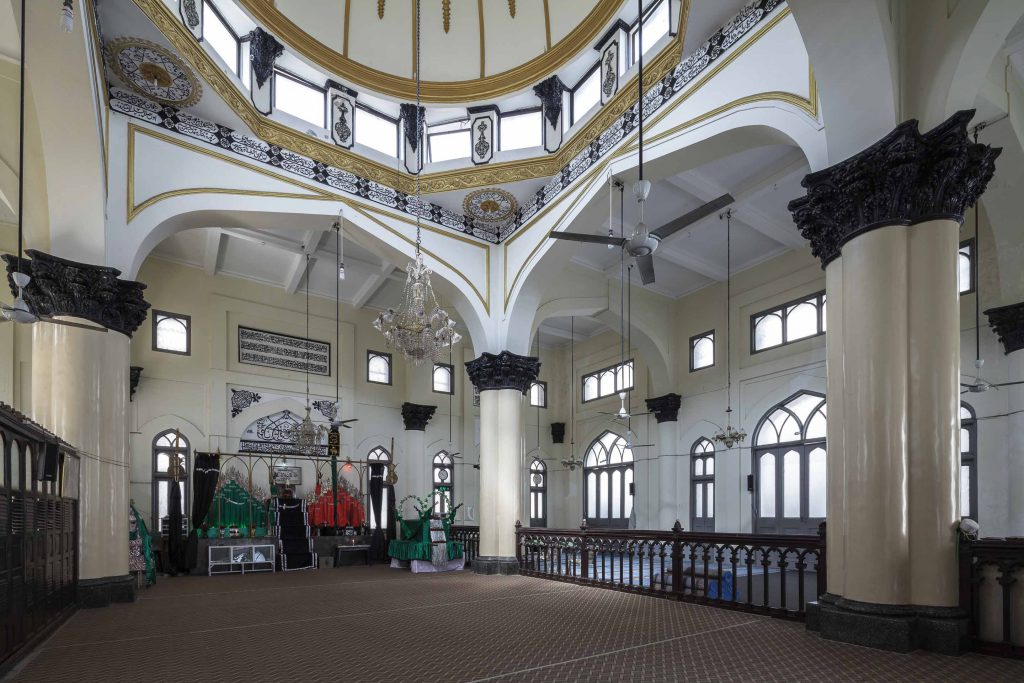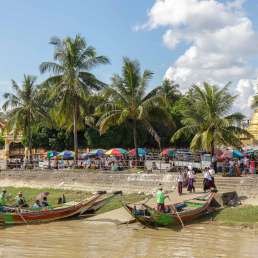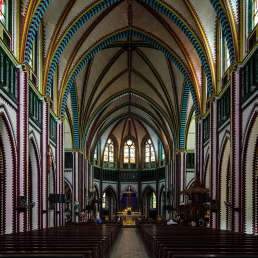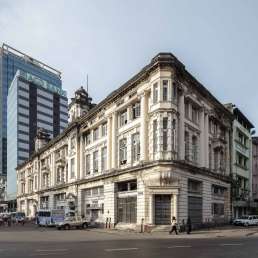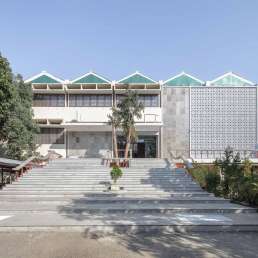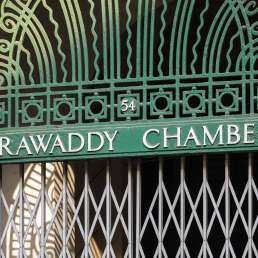Address: 91 30th Street
Year built: 1914-1918
Architect: Unknown
While there are many Shia in India, the majority of Indian Muslims who migrated to Burma were Sunni. Thus, there were only ever a few Shia mosques in Yangon. This is the community’s largest. It dates back to the mid-19th century, when Indo-Persian merchant families erected a wooden house of worship in 1854. By the entrance, a well even predates the first mosque: it was dug by order of colonial officer Sir Arthur Phayre in 1852 (at a time when sanitation was a major challenge in the fledgling city). The current structure was built between 1914 and 1918 and remains largely intact in its original form today. The mosque occupies a wide plot between 29th and 30th Streets along Mahabandoola Road. Its main entrance is on 30th Street. Despite the dense urban layout of the vicinity, the two large minarets stand out from afar. The mosque itself is set back from Mahabandoola Road behind the large Mogul Hall, which accommodates worshippers and those on business passing through the city. A recent paint job and interior restoration have kept the entire complex in good shape.
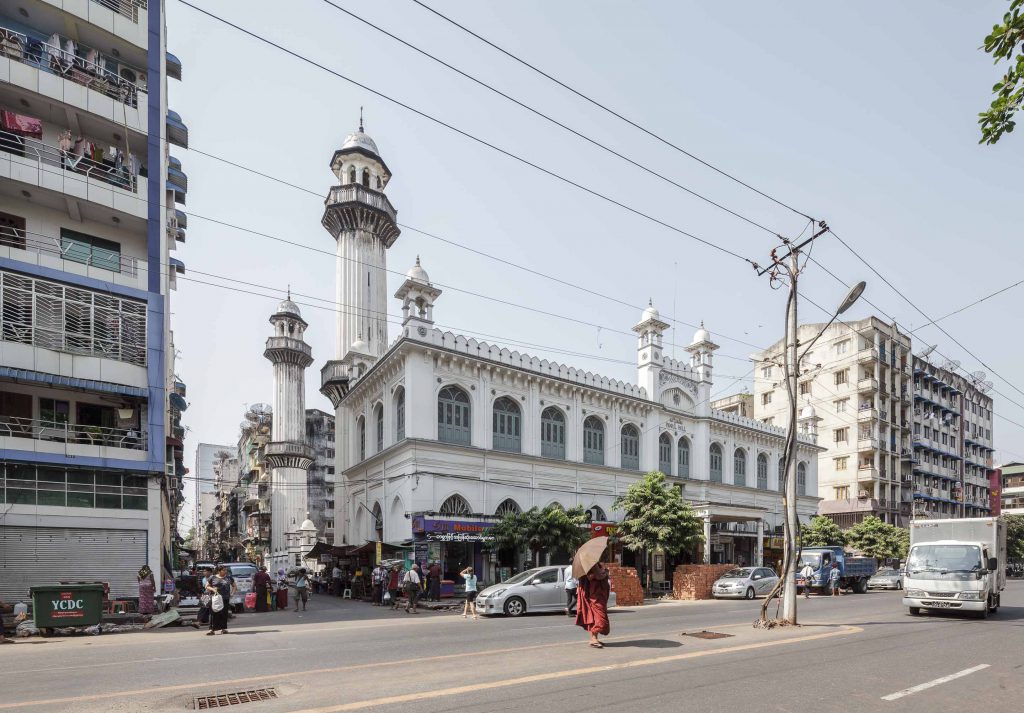
The Indo-Persian merchants who set up this mosque hailed from Persia by way of India. The board of trustees comprised men named Kabuli, Ispahany, Sherazee and Khorasanee, to name a few, which give us strong clues about their geographic origin. The history of one family bearing the latter name is exemplary. In his self-published autobiography, S Afsheen explains that his great-great-grandfather, Hasan Ali Khorasanee, came to Burma in the 19th century where he, like other “Iranians”, was given preferential trading terms by the Burmese court. Hasan Ali’s father, Ashraf Afshar, was an adviser to the royal court in Delhi. The Burma-based Khorasanee family became a powerful family trading firm over the next generations. S Afsheen’s great-grandfather, Backer Khorasanee, owned several villages and other properties in Rangoon as well as a thriving business trading in leather and other merchandise, which he sold in his department store on Mahabandoola Road. His own house stood on 31st Street. S Afsheen’s maternal grandfather, Mohammed Hashim Ispahany, was one of the original trustees of the rebuilt Mogul Mosque alongside the adjoining Mogul Hall.
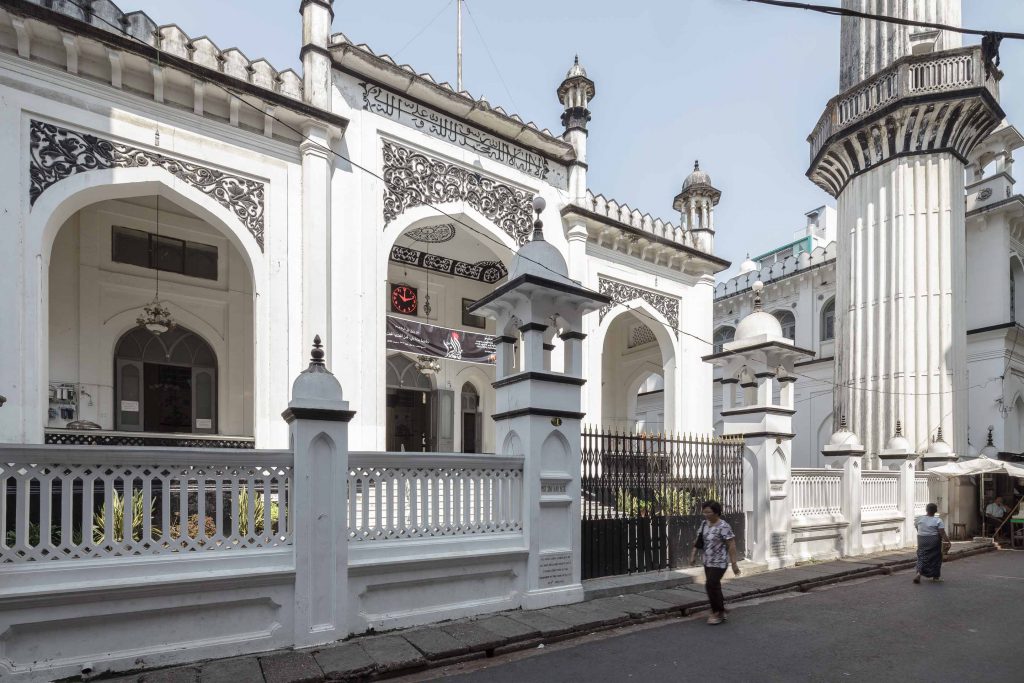
Two engineers of a British firm were selected to plan and oversee the construction. According to S Afsheen, they were sent to India to select a design for the mosque. They were particularly impressed by the Taj Mahal in Agra.
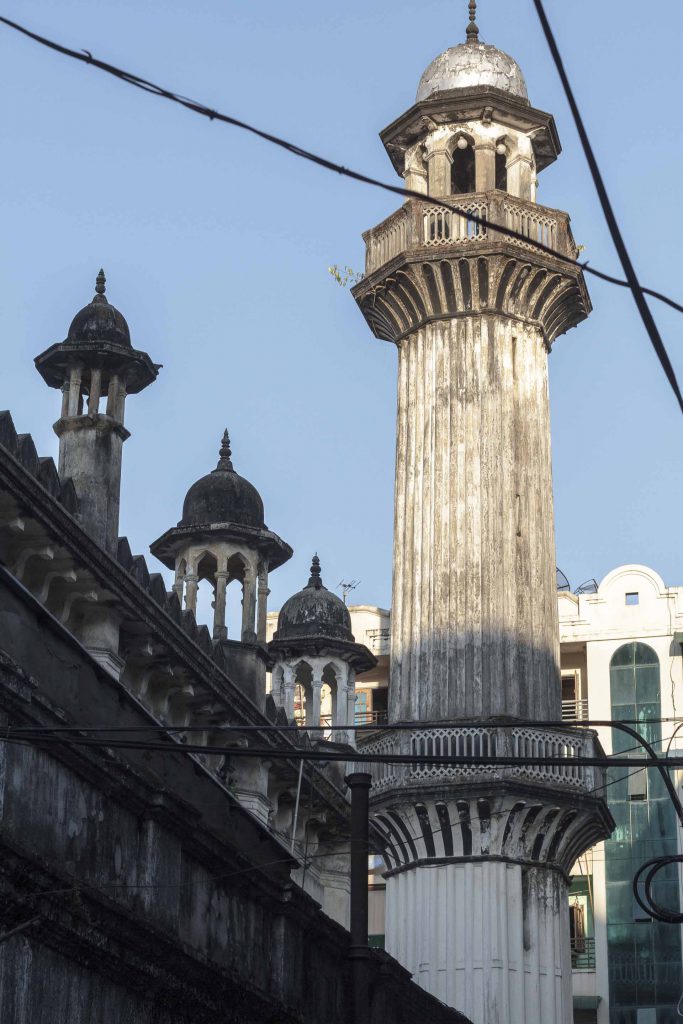
The Day of Ashura, the 10th day of the month of Muharram, is regularly observed by the Shia community in Yangon, today about 2,000 strong. The ceremony is held in honour of Hussein, who died a martyr in the battle of Karbala—a historic clash between Shia and Sunni in present-day Iraq, in the 7th century AD. Around the world, Shia mark this as a day of mourning. It involves spectacular and masochistic rituals, mainly by Shia men. For example, they walk barefoot across hot coals or lash themselves with long chains of blades.
